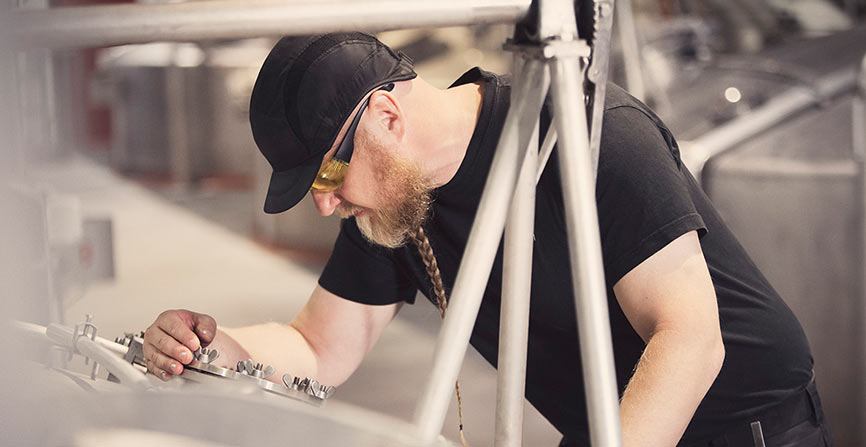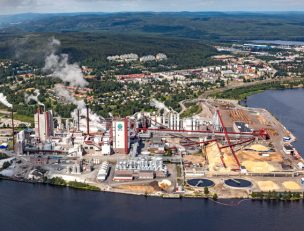In Finland, the name “Altia” is usually associated with alcoholic beverages, particularly Koskenkorva vodka. However, distilled grain spirits form only one arm of this company’s wide range of products: the same production plant is responsible also for starches, raw material for animal feed, carbon dioxide, steam, and barley ash. The Wedge process data analytics tool is now part of this facility’s complex production process.
“We are a barley spike plant! In other words, we’re a major Finnish company that specializes in processing barley, and distilled grain spirits form only one branch of our operations, albeit an important one,” Altia production manager Arttu Kivi says with a smile.

The plant area is also home to feed manufacturer A-Rehu, which produces 60–65 metric tons of animal feed products annually. In addition, nearly 60 million kilograms of starch is produced at the plant, to serve as raw material for the paper industry. The volume of ethanol produced each year is 22.5 million kilograms. Carbon dioxide production amounts to 8,000 metric tons per year, with AGA being in charge of production and sales.
Bio-based energy from own processes
The amount of barley husks generated as a byproduct is 6–10 million kilograms, and the power plant uses this material to generate steam for the facility’s operations.
“We cover 60–65 percent of our energy needs in this manner. So two thirds of the energy we use is bio-based. This is something we are very proud of. Our hard work has paid off: the process is smooth and environmentally friendly,” Kivi says.
The ash generated from burning barley can be used as a fertilizer. While ash from power plants is rarely suitable for soil improvement, Altia’s end product is special – it can be good for the fields.
The investment will pay for itself within a couple of years
The Wedge data analytics tool has proven to be a smart and agile companion in management of the plant’s complex process. According to Kivi, it has drawn attention to good process optimization opportunities.
“We started encountering unusual issues related to energy and water early on, during the test-run phase. Wedge highlighted the shortcomings, and equipment purchases were made on the basis of the information this tool provided. Now we pay closer attention to the consumption and respond to changes accordingly,” he explains.
According to Kivi, Trimble’s team of experts has been very responsive, during the test run but also in the course of ongoing operations since then. In an added benefit, the annual Wedge user event offers new insights and valuable tips.
Kivi says, “Initially, learning the ins and outs of Wedge and finding feasible ways to get information of the processes requires one person’s work input. Using Wedge provided us with financial benefits right from the outset. I would say that this investment will pay for itself within a couple of years.”
Sights set on savings and optimization
The objectives behind using Wedge were optimization and financial savings. Altia has succeeded in reaching both of these goals, and the controllability of the process has improved.
“Once you’ve invested a little time in learning to use Wedge, it becomes an agile tool for plant operations. We are currently also in the process of restructuring our quality management organization, and that will enable us to use Wedge even more efficiently. Our objective is to ensure transparent quality, wherever production takes place,” says Kivi.
He concludes, “When you manufacture various products, of many types, you need to look at the processes from several angles. If large volumes of starch are produced, the production volume of ethanol is reduced accordingly. Quality control and addressing issues promptly are decisive factors in the success of operations.”
Want to learn more? Contact our sales team


